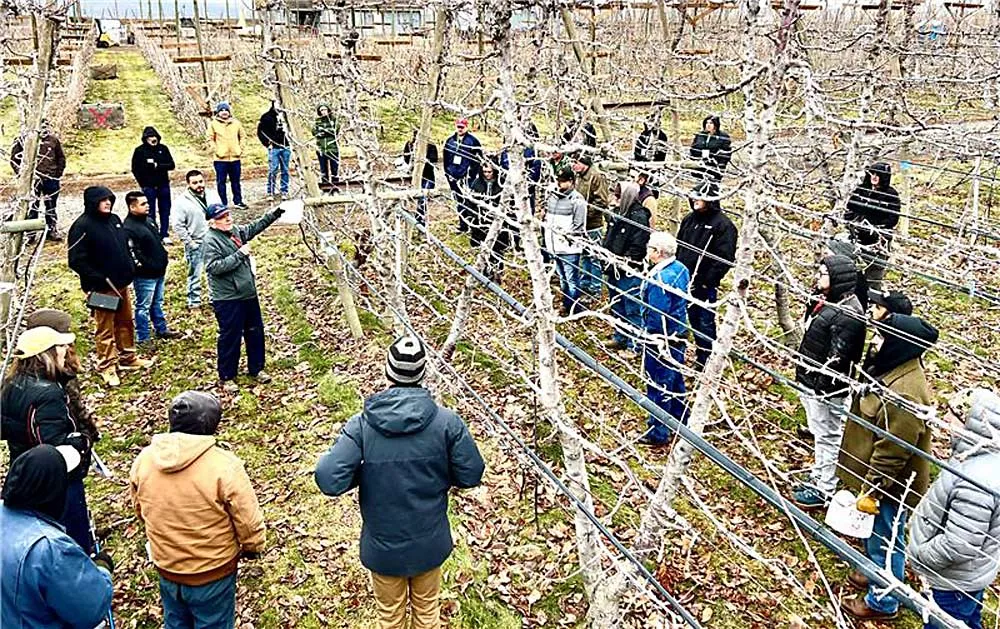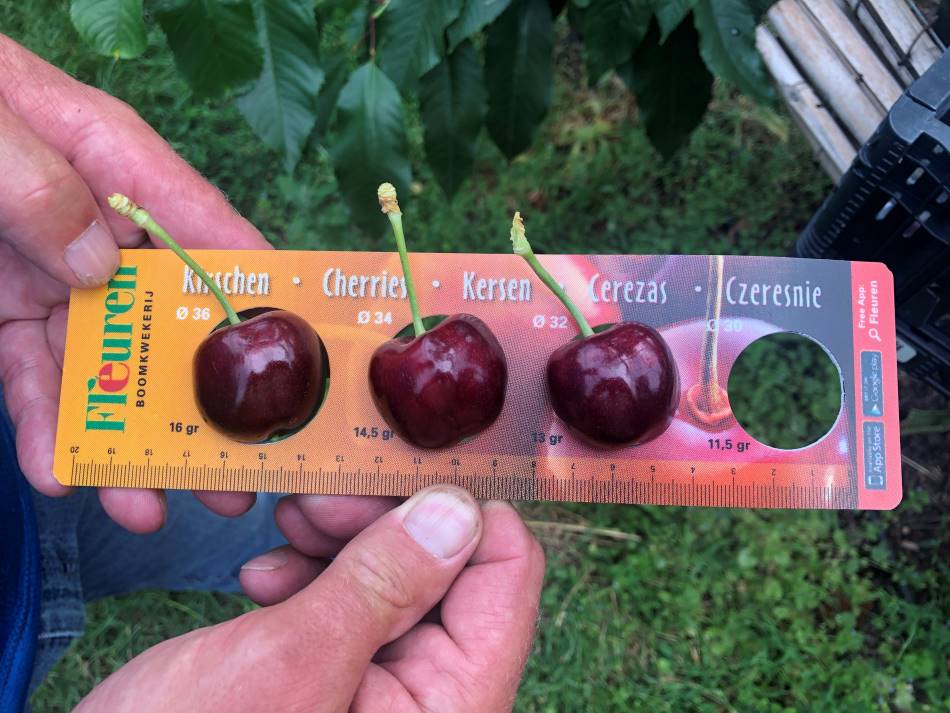The Washington State Tree Fruit Association kicked off the second day of its annual meeting with a session on cherries and a visit to an Allan Bros. orchard in Naches, Washington, followed by sessions on technology and pears.
The technology session highlighted growers' needs for new tools to improve efficiency and reduce costs.
Collaborators shared an update on the Smart Orchard project, which includes research trials conducted by Washington State University and is funded for three years by the Washington Tree Fruit Research Commission. The project is hosted at a 30-acre orchard managed by NWFM, a farm management company known for its early adoption of technology.
Lav Khot, associate professor of biological systems engineering at WSU and director of AgWeatherNet, is the lead researcher on several projects this year, including blossom mapping, heat stress monitoring, irrigation automation trials, and autonomous technologies. Commercial collaborators are privately funded.
Khot and Keith Veselka, managing partner of NWFM, provided a brief update on some ongoing research, including crop load management, pollination, autonomy, precision spraying, and electric weeding.
Veselka expressed interest in the work of BeeHero, which tracks and monitors bee activity in the orchard. Sensors track bees entering and leaving the hives and their flights within the orchard. The data provides insights into the distances traveled by the bees and the impact of adverse weather, including wind, on their productivity. Hive scales show the health of the hive, measured by weight.
“When you have a healthy hive, pollination opportunities improve dramatically,” Veselka said.
Regarding autonomous equipment, NWFM has worked with BlueWhite over the past two seasons, and Veselka said they have had good success. “This ranch lends itself because it’s so flat and squared off; there aren’t many challenges. We had some connectivity issues, but I think they’ve resolved them,” he said.
Automation goals include labor efficiency and improved safety. “We all need to cut labor costs due to overtime and inflation,” he said. “And if we can have one operator running three or four of these tractors, we can save a lot of money and increase farm safety.”
In a talk on spray technology, Gwen Hoheisel of WSU Extension said growers want to know what the ideal spray system is. Her answer: “The ideal sprayer is still a sprayer that gets every droplet to the crop.”
Even with new systems and technologies on the market, the first and second steps to achieving optimal coverage remain the same: set the air direction and volume. “If you get the air direction and volume right, without any technology, you’ll get the highest return on investment,” she said.
When ready for new technologies, growers need to evaluate the actual needs of their orchards and canopies and compare them with financial costs and return on investment.

During a grower panel, growers agreed that tech companies often “overpromised and underdelivered” in meeting growers’ needs, leaving growers to bear the research costs while companies learned about the industry.
“Growers have learned from this,” Veselka, the moderator, said.
To tech companies, he said those days are over. “We’re not going to pay for your products to teach you what farming is. If anything, you’ll need to work with us—and perhaps even pay us—to help develop your products.”
While times are tough, growers need technology. “We want to work with you, but you need to ask the right questions and be willing to open up and collaborate.”
Layers of technology can be daunting, so Veselka asked the panel what is making a difference on farms today.
Matt Miles, process improvement manager for Allan Bros, said tracking labor costs has been a priority. It’s about knowing the costs and hours workers spend on a task compared to how much time it took before. “When you break down those numbers, it better be a smaller number because that means you’re more efficient,” he said.
If you’re writing it down, put it in a spreadsheet, and if you’re doing that, consider a labor tracking platform.
“Labor data is probably one of the most important things we’re looking at right now.”
Paul Cathcart, area manager for Columbia Reach, said growers need to add the qualitative metrics they’re trying to achieve. “It’s not just about hours. It’s about understanding how much is actually being accomplished in the field and how close you are to meeting your goals.”
Cathcart also emphasized the importance of growers having standard operating procedures to document the actual process on the farm. “That alone will help evaluate all these solutions and navigate this process,” he said.
In the afternoon, pear growers gathered to hear CarrieAnn Arias, the new president and CEO of the Pear Bureau Northwest, discuss how the industry could—and perhaps should—start talking to consumers about pears.
For starters, she suggested growers start having more fun.
“Right now, ‘Pears’ is boring; we’re not having fun,” said Arias, who took on the role about six months ago, replacing Kevin Moffitt.
She shared a slide with suggested slogans like: “I make this russet look good!” and ‘No, I’m not an apple!’.
She also advised the industry to avoid talking down to consumers or preaching to them. Consumers already know fresh produce is healthy and can figure out how to ripen pears at home—they do fine with avocados, she said.
She also spoke about the casual use of influencers. Recently, rapper Rick Ross talked about losing 30 pounds by incorporating pears into his diet.
“There are even some cartoon videos of this rapper walking around with pears,” she said. “It’s pretty adorable… with some curse words, unfortunately, so it wasn’t something we could really leverage without turning off consumers.”
Other presentations focused on entomology, decay prevention, and improving fruit set.
The annual meeting will continue with an awards banquet Tuesday evening and conclude Wednesday with the final day of presentations and the trade show.
Source: Good Food Grower
Image: Good Food Grower
Cherry Times - All rights reserved













